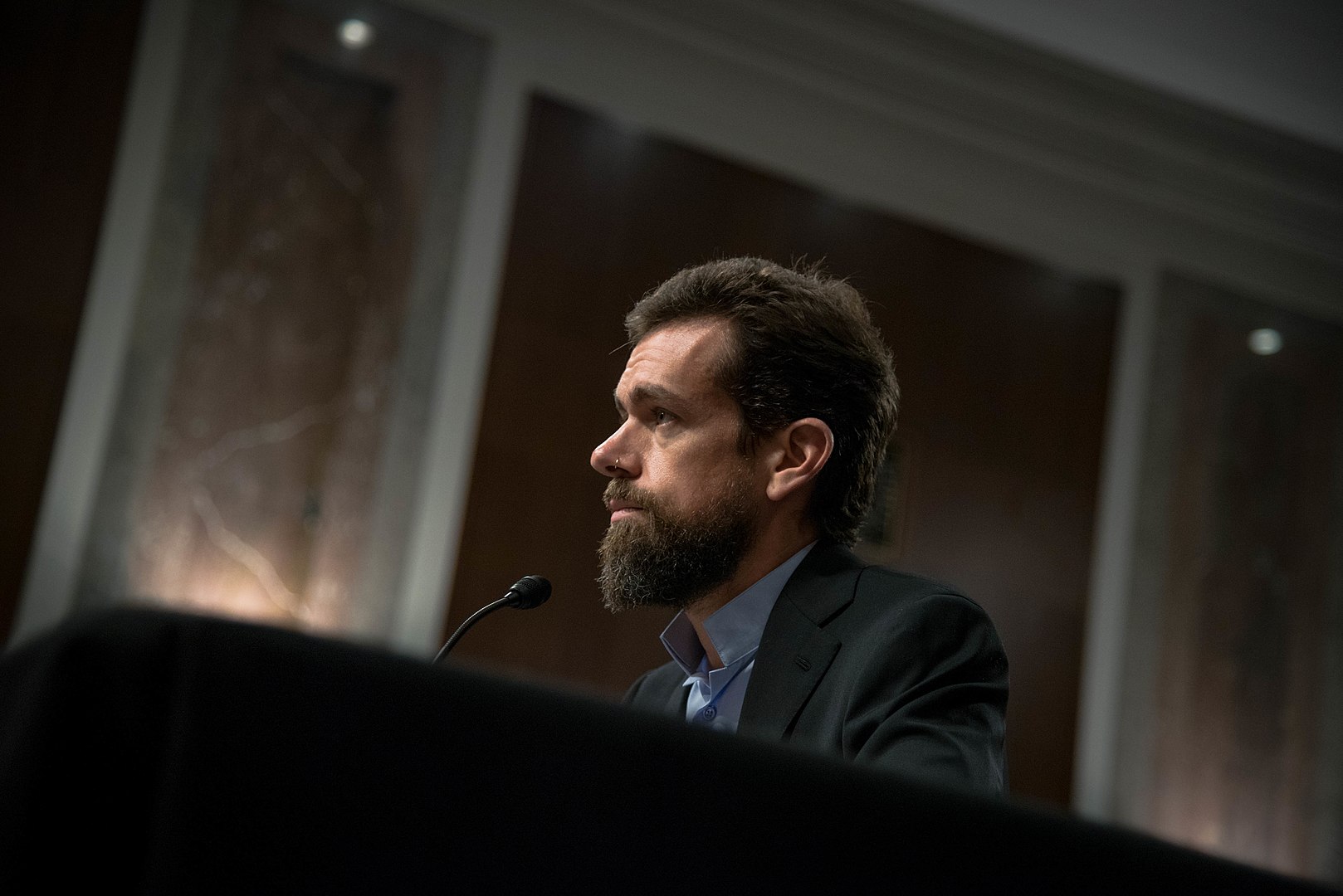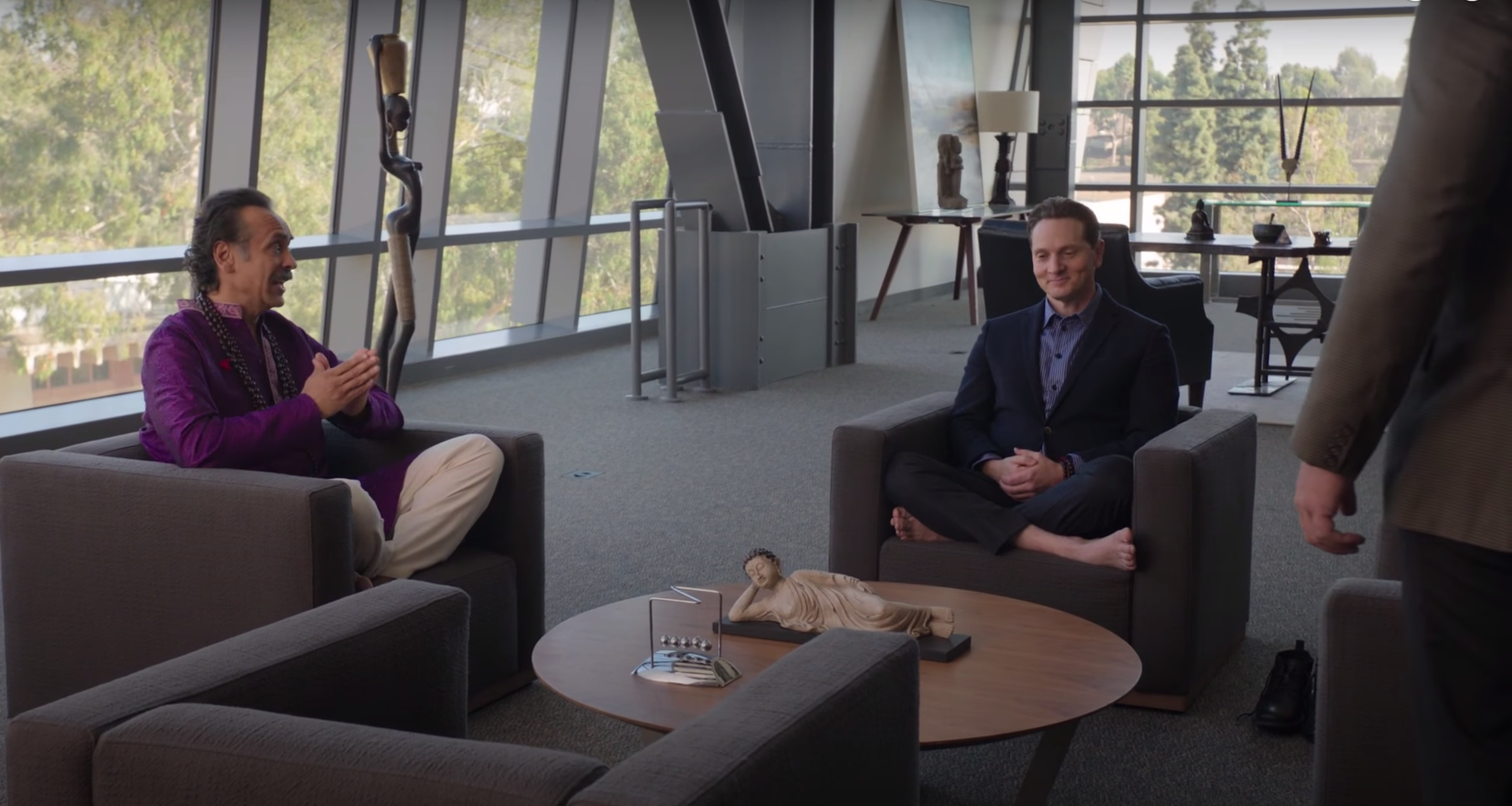Monks in the Googleplex

By Thomas Lambert
Staff Writer
15/9/2020

Apple was first: in 1974, a long-haired, luxuriantly whiskered Steve Jobs travelled to India to become a sadhu – a kind of Hindu ascetic – before switching to Zen Buddhism under the influence of Japanese monk Kobun Chino Otogawa. Next came Microsoft’s Bill Gates, who now boasts of meditating “two or three times a week, for about 10 minutes each time.” Even Silicon Valley’s most recent potentate, Amazon’s Jeff Bezos, can be heard gushing over the Buddhist concept of Shoshin, a “beginner’s mindset” according to which the worker approaches each task with “openness, eagerness and a lack of preconceptions.” Today, it’s everywhere: in offices, in stairwells, in bamboo-matted prayer rooms. But the noisiest convert was the founder of the noisiest platform. Last year, Twitter CEO Jack Dorsey was all over the news, extolling the benefits of a 10-day meditation retreat – a “birthday gift” – deep in the mine-strewn Burmese jungle. In Silicon Valley, Buddhism is becoming an official religion.
It seems an unlikely affinity. Why would the most commercial, the most acquisitive, the most transactional place on earth choose to adopt such an austere, ascetic, and otherworldly faith?
James William Coleman, a California-based sociologist, has argued that the first wave of Western Buddhists was seduced not by Buddhist philosophy, but by the exoticism and mystique to be found in its shrines, rituals, and gnomic wisdoms. In the beginning, Buddhism was just one fashion trend among a host of others – not just Eastern competitors like Hinduism, but also Theosophy, Occultism, Esotericism, and Jungian psychoanalysis.
Amid this spiritual free-for-all, one form of Buddhism – Mahayana, the more recent, less conservative form that predominated north of the Himalayas – was favored above all others. With its emphasis on gentle, compassionate humanitarianism, Mahayana was easy for tender-hearted Westerners, drunk on Weltschmerz, to accept. By contrast, apart from a few vague notions of cosmic unity, drawn as much from Theosophy and New Spirituality as Buddhism, metaphysics was largely ignored.
At this embryonic stage, Western Buddhism was thus an aesthetic and moral choice, a way of signaling one’s compassion to the world, rather than a systematic theology. Even Buddhism in futuristic Silicon Valley has its roots in this kind of aestheticized American counterculture – specifically, in the work of Beat writers Jack Kerouac and Gary Snyder. Snyder taught at UC Davis, just an hour and a half’s drive from San José, and in a 1985 interview with Playboy, Steve Jobs cited Snyder’s visits to his college in Reed, Oregon as getting him “interested in Eastern mysticism.” This all reached its zenith in 1997, when Brad Pitt’s poutily propagandistic film Seven Years in Tibet spawned a craze not just for Tibetan Buddhism, but also for Pure Land and Zen, in Hollywood.
But times have changed. Fewer and fewer Westerners are seduced by the “ethnic” accoutrements of Buddhism. The mystique has been lost, commodified: by 1998, the Dalai Lama had even appeared in an advertisement for Apple. Accordingly, Westerners are now favoring more austere brands of Buddhism. Specifically, Theravada, the older, more conservative branch of Buddhism common in Southeast Asia, is increasingly replacing Mahayana. In Silicon Valley, in fact, many Western Buddhists – notably Jack Dorsey – are now rejecting denominational allegiance altogether in favor of a single meditative practice from the Theravada tradition called “Vipassana.” Stemming from the Pali word for “insight” or “special-seeing,” Vipassana is exclusively preoccupied with how its practitioners see the world. It focuses solely on meditation, which, if carried out correctly, apparently induces the adept to recognize the world as the transient, illusory place that Buddhist metaphysics holds it to be. In its customs, though, it inherits little from the Buddhist tradition. In fact, with the preference for casual dress, the use of first names for spiritual teachers, and free, disorganized “retreats,” Vipassana shows little sign of Eastern provenance.

Jack Dorsey (Picture Credit: Mark Warner)
Vipassana’s ascendency proves one thing: “Western Buddhism” can no longer be dismissed as an orientalist fad. Buddhism is not just an “ethnic” curiosity: gone are the mantras and mandalas; gone are the robes, those innumerable reds and ochres that first kindled the Western craze for Tibet. There is an affinity here which goes beyond exoticism, into the marrow of ideology, axiology, and belief. The German philosopher Peter Sloterdijk has argued that a large part of Buddhism’s success in the West has to do with the asceticism of the Buddhist lifestyle. Certainly, it would be wrong to view today’s Silicon Valley billionaires as mere hedonists, looking to bleed the world for all its worth: there is indeed something spiritual – perhaps even messianic – in their drive. Tech gurus like venture capitalists Gary Vaynerchuk and Keith Rabois are all over Twitter, extolling the virtues of 18-hour work days and never having taken a week’s vacation. No wonder that the contemporary tech titan has adopted the mindset not of the fat cat, but of the monk.
It would be wrong to view today’s Silicon Valley billionaires as mere hedonists: there is indeed something spiritual in their drive.
Asceticism certainly explains the preference for the pared-down, understated Vipassana over showier Mahayana sects like Tibetan Buddhism and Zen. And Buddhism in general seems to give its Silicon Valley followers a real advantage over their unenlightened peers. Tech companies have even begun incorporating Buddhism into working life in a bid to increase productivity. In 2011, following a visit from Zen monk Thich Nhat Hanh, Google began its “Search Inside Yourself” training program. Employees at the Googleplex could now practice Buddhism between stints of “deep-work.”

Screenshot from Google’s “Search Inside Yourself” programme homepage
“Search Inside Yourself” is particularly interesting because of the curious way it pulls in two different directions. On the one hand, its stated ethos certainly bears the stamp of its Zen origins. Its description echoes the emphasis on compassion and moral benignity common to all Mahayana sects, and to Zen in particular: “We are a global community making mindfulness and emotional intelligence practical and accessible. Together, we’re working toward a more peaceful world in which all people feel connected and act with compassion.” But a look at the content of its classes tells a different story. Classes like “Neural Self-Hacking” and “Managing Your Energy” aim to instil not compassion or benevolence, but “Adaptive Resilience” in the face of Big Tech’s stresses and strains.
Likewise with the intriguing numerology that accompanies “Search Inside Yourself.” Given its Mahayana provenance, it is no surprise that the program places great emphasis on the number six. In an echo of the “Six Perfections” of Mahayana Buddhism, “Search Inside Yourself” promises six main benefits, as well as the cultivation of six main virtues, neatly arranged in a pyramid, with mindfulness at its base and leadership at its apex. But where the ancient “Six Perfections” (generosity, morality, tolerance, energy, meditation, and wisdom) stress benevolence and moral good-sense, Google’s six benefits seem to be related to becoming a better worker. Alumni of the program will “Experience greater overall well-being,” “Build resilience in the face of challenges,” “Manage stress,” “Develop greater self-awareness and emotion regulation,” and “Increase focus and attention.” Only the final point mentions “empathy,” and even then, it’s couched in the language of productivity, as a tool to help the worker “communicate more effectively.”
Where the ancient “Six Perfections” stress benevolence and moral good-sense, Google’s six benefits seem to be related to becoming a better worker.
So, Buddhism is popular in Silicon Valley because it’s useful. But asceticism – and its contemporary metonyms, “productivity” and “workaholism,” the former euphemistic and the latter pejorative – is only half the story of Buddhism’s utility. Asceticism comes in many forms – Christian, Muslim, Hindu, Stoic – and yet in Silicon Valley, Buddhism holds sway. What is it about Buddhist beliefs that make them so singularly useful? Slovenian philosopher Slavoj Žižek locates the answer in Buddhist metaphysics: in particular, their otherworldly, life-denying character. Particularly important are the “three marks of existence,” a set of doctrines that amount to a denial of the reality of the material world, which is characterised by impermanence (anicca), suffering (dukkha), and an absence of permanent essences and selves (anatta).

In the popular HBO series Silicon Valley, tech titan Gavin Belson (right), retains a Buddhist spiritual advisor, Denpok
In Eastern Buddhism, the “three marks” motivate the adept to “let go” of worldly and material concerns, of drive, desire, and wealth, and pursue a life of withdrawn monasticism. In Silicon Valley, however, Buddhism is appropriated to serve corporate interests. Stressed and overworked tech workers can inure themselves to their misery by remembering that this world is illusory, hollow. Leave your tribulations at the door: the world is nothing but a vale of tears. Even the sense of detachment from your own activity Buddhism encourages is psychologically useful. Consider its greatest standard-bearer. Jack Dorsey, even when under the most immense pressure at work, can remind himself of the immateriality and transience of all commercial life, and be consoled. What are the greatest professional disasters that could befall him? Massive financial loss? Buddhism teaches that possessions are meaningless. The obsolescence of a prized piece of technology? Everything is impermanent anyway; obsolescence cannot be fought. Reputational damage? Reputation is a product of the social world, the shadow of a “self” that does not exist. What is happening here is a kind of metaphysical stress-relief. However high the stakes, the Buddhist believes, they are stakes held in nothing.
But something strange is going on. Even as the practitioner holds these beliefs intellectually, his actions bespeak a totally different set of values. Practically, Buddhism is used to sustain the very acquisition it’s supposed to reprehend; it primes its adepts to pursue growth for growth’s sake. Two beliefs are thus held at once: one in the heart and one in the head. This is the great significance of the “retreat,” an institution with newfound cachet among Silicon Valley’s best and brightest. Whether they choose to meditate amid Burmese creepers or California sage brush, these days, Dorsey et al. do not give up their careers completely for meditative practice; rather, they circumscribe it within 10-day retreats before resuming their professional lives. Everywhere, Buddhist meditation is miniaturised, commodified: “Search Inside Yourself” classes operate during lunch breaks, smartphone apps offer 10-minute meditation “bursts.” In Silicon Valley, Nirvana can be yours, but only for a few minutes at a time.
In the popular HBO series Silicon Valley, tech titan Gavin Belson, retains a Buddhist spiritual advisor, Denpok
What this strange double-consciousness amounts to is a kind of “ironic distance.” Those workers who are burnt out by the furious pace of tech simply identify too closely with their activity. What they should really do is surrender, bob along with the technological tide and view themselves, not as fully autonomous beings, but as mere conduits for forces beyond their control. This too has its roots in Buddhist metaphysics. The doctrine of Pratityasamutpada, or “dependent origination”, teaches that all phenomena are dependent on other phenomena, and that free will and human agency are illusions borne of the self. Such determinism plays out in Silicon Valley as a resignation to the impetus of technology. Unscrupulous behaviour is the result not of the choices of individuals, but of the tech frontier’s mysterious, and intrinsic, momentum. Innovations like social media’s “infinite scroll” feature, for example, which encourages addictive consumption, are treated as technological inevitabilities, rather than the product of human choice.
The “ironic distance” cultivated by the Western Buddhist discourages self-examination and critical thinking. A Marxist might characterise Western Buddhism as a kind of “self-imposed alienation,” where the worker, to stave off what might become subversive impulses, learns to view his own behaviour as if from afar. This also is why the triumph of Vipassana over more traditional Mahayana and Theravada forms is so crucial. In traditional Buddhism, the temptation towards passivity, amorality, and nihilism (so criticised by, among others, Nietzsche), is always tempered by a strong moral sense – be it through “karma” (the notion of moral recompense so common in “Ethnic” Buddhism), the “Six Perfections,” or even the ancient practice of “ethical reflection” (sila) that was an indispensable prelude to ancient Vipassana (before meditation could furnish its great metaphysical insights, an ethical sensibility had to be cultivated). None of these is present in contemporary Western Buddhism. Somewhere on its journey across the Pacific, Buddhism lost its moral thrust.
The “ironic distance” cultivated by the Western Buddhist discourages self-examination and critical thinking.
Whether or not morality will find its way back into Western Buddhism remains to be seen. But why does it matter? It matters because Silicon Valley is the axle upon which the modern world’s technological revolutions turn. A handful of corporations based here own and store enough data on people to match any other entity on earth – including behemoths of state-surveillance like Russia and China. A handful of people here wield immense influence with little oversight and accountability. The opinions of whole regions and demographic groups are shaped by bespoke Facebook ads, Twitter feeds, and YouTube suggestions.
Silicon Valley decides how the world talks, how it learns, how it thinks. Such power confers responsibilities. Yet Silicon Valley’s inhabitants are no longer simply shirking and abnegating these responsibilities like the fat cats of old, but denying the notion of responsibility altogether. Western Buddhism makes their moral indifference easier by distancing them from their conscience, their agency, their sense of self. Can we really expect them to take personal responsibility for actions and consequences experienced only through the haze of “ironic distance?” Meanwhile, from Palo Alto to San José, the palm trees are taller than ever, and the Apple Campus gleams like a halo in the Cupertino sun.
